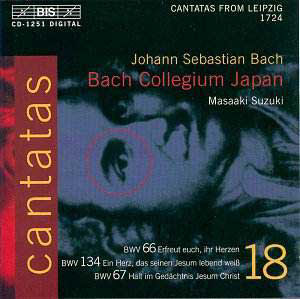 Composer: Wolfgang Amadeus Mozart
Composer: Wolfgang Amadeus Mozart
Works: Serenade No. 4 in D major, K203 (1774); Vier Kontratänze, K101 (1776); Serenade No. 5 in D major, K204 (1775)
Performers: Tero Latvala (violin), Tapiola Sinfonietta, cond. Jean-Jacques Kantorow
Recording: Recorded September 1999 (K203/204) and April 2000 (K101) at the Tapiola Concert Hall, Finland
Label: BIS
Mozart’s serenades, often overshadowed by his more monumental works, reflect a crucial stage in his compositional development, revealing the charm and elegance synonymous with the Classical style while simultaneously hinting at the depth of his later masterpieces. The present recording, featuring Serenade No. 4 in D major, K203 and Serenade No. 5 in D major, K204 paired with the delightful Vier Kontratänze, K101, offers a vivid portrait of Mozart’s early orchestral language and his burgeoning mastery of instrumental color and structure.
Jean-Jacques Kantorow leads the Tapiola Sinfonietta, a group with a distinctive sound that seems to resonate with Mozart’s own spirited, aristocratic flair. From the outset of K203, the orchestra’s articulation is crisp, and their dynamic control is strikingly nuanced. The opening movement introduces a lively dialogue between the strings and winds, establishing the playful character that pervades both serenades. Notably, the winds—particularly the oboes and bassoons—are given ample opportunity to shine, weaving intricate counterpoints that enhance the texture of the orchestration.
Tero Latvala’s role as the solo violinist in the second, third, and fourth movements of K203 is particularly noteworthy. The cadenzas, crafted by Kantorow, are a blend of elegance and bravura, showcasing Latvala’s technical prowess while remaining in service of the music’s spirit. His ability to traverse the complex passages with both agility and expressiveness is commendable, especially in the second movement, where his lilting phrasing contrasts beautifully with the grounded orchestral backdrop.
K204’s concluding movement presents an intriguing duality, marked Andante (grazioso) – Allegro. The juxtaposition of these contrasting tempos reveals Mozart’s early experimentation with structural innovation, reminiscent of Haydn’s playful ingenuity. The seamless integration of these two movements, with their distinct character yet shared thematic material, exemplifies Mozart’s ability to surprise and engage the listener. The Tapiola Sinfonietta executes this intricate interplay with admirable precision, demonstrating both the technical and interpretative depth required to illuminate such a complex structure.
Recording quality plays a significant role in the listener’s experience of this disc. The BIS engineers have captured the effervescent sound of the Tapiola Concert Hall, allowing the individual instruments to resonate and blend organically. The clarity of the recording enhances the intricate textures Mozart employs—particularly in the Andante of K203, where the trilling second violin introduces an unexpected layer of color that dances playfully around the main themes. The balance between the strings and winds is particularly well-managed, ensuring that no single voice overshadows the others, which is crucial in works so rich in ensemble interplay.
Comparatively, this recording stands apart from others in its commitment to detail and the vividness of its interpretation. While many recordings of Mozart’s serenades may settle for a routine execution of the notes, Kantorow and his orchestra breathe life into these works, revealing a depth that invites repeated listenings. The dynamic contrasts, the playful articulation, and the expressive cadenzas contribute to a fresh understanding of these early compositions.
This disc is a treasure, capturing the youthful exuberance and innovative spirit of Mozart’s serenades with verve and sophistication. The combination of commendable musicianship, insightful interpretation, and outstanding sound engineering results in a recording that not only honors the composer’s legacy but also invites listeners to rediscover the charm and complexity of his earlier works.



